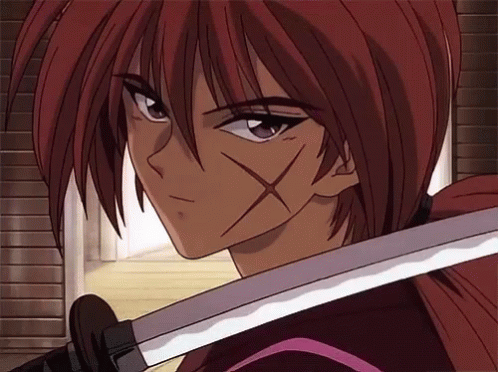'Rurouni Kenshin' Movie Review
For "Samurai X" fans, a live-action version of this Japanese manga and anime series originally written and illustrated by Nobuhiro Watsuki can be a make or break undertaking. With "Rurouni Kenshin," both the hard-core followers and the new viewers of this wildly popular offering can rejoice with a film rendition that succeeds in rekindling the excitement over its Meiji era-set material.
Instead of making a cheap attempt to cash in on the viable franchise and falling into the cheesy fluff that most comic/cartoon-to-big screen releases succumb to when they are released as live-action treats, this slick actioner rightfully captures the essence of its source. Director Ohtomo manages to keep the balance between remaining faithful to the story's origin and allowing the motion-picture work to really stand on its own.
The integrity of retelling the Kenshin story is aptly rendered into a lush adaptation that merges canon and non-canon elements to create a solid epic piece. It won't let down most fans who are in search for a satisfying recreation of their beloved characters and scenes on the big screen. For the most part, the film justifies its over two hours of running time with a carefully crafted tale that is full of many engaging action scenes, as well as subtle moments of comedy and romance. However, there are a few instances that look quite overdone, including that of Kaoru's extremely long and annoying monologue-ish moment while being in captivity during the latter part of the movie.
This Japanese live-action rendition becomes an accessible and crowd-pleasing standalone affair. For a series with so many arcs and characters, the script is still able to genuinely tell a focused narrative by combining the right story arcs, tweaking plot points here and there, blending together different sub-stories and well-known characters in a fairly seamless way, and removing unnecessary details.
The various facets of this polished spectacle flow well and the presentation finds many ways of putting its messages of non-violence, love, greed, rapid modernity, and atonement-seeking before its viewers. Interestingly, this cinematic piece also leaves enough space for a likely sequel without letting the storytelling suffer along the way. It works as a unified piece of work and not as a mere collection of chapters centering on a titular hero who harbors a secret past as a deadly assassin.
Choreography and camera techniques keep the action consistently appealing. The film's kinetic pace fills the screen with a lot of blockbuster-style action scenes, complete with fluid sword slashes, fistfights, and blood splatters. With the blood effects often becoming the exemption, most scenes utilize practical effects instead of CGI.
The expertly condensed story clearly picks up well on the fight scenes, although the excitement sometimes fizzles out during certain dramatic expositions and confrontation scenes. The rip-roaring action, which is primarily set as a hip fusion of historical ambience and comic-book hero fantasy, adds enough visual extravaganza without looking annoyingly fake. However, the attempt to utilize a blockbuster action style occasionally lead to distracting rapid cuts and a few awkward moments of wirework. This also makes the entertaining material kind of lacking when it comes to distinctiveness.
Like the cinematography, production design, and other aspects of the production, the energetic soundtrack has a similarly blockbuster feel to it. From its pop-punk theme song to its pounding barbarian beats, the musical score makes good use of chorus and strings to create an orchestral type of world music presentation, which uses both traditional Japanese and more modern instruments.
The nearly perfect casting brings the original characters to life in faithful but convincing ways. Takeru Sato as the killing machine-turned-carefree wanderer Kenshin Himura impresses during his carnage and trance-like killing sprees, as well as his funny and lighthearted moments. His endearingly boyish and handsome demeanor really channels his role as a young samurai who finally says no to killing. He aptly keeps his cool and his steely moral resolve through his reddish hair in long ponytail, his curvaceous lips, and his wide Japanese eyes, which very much resemble the one in the anime. Moreover, his moves rightfully convey both his being a ruthless battousai and a bumbling rurouni.
Emi Takei is a mixed bag as Kaoru, a spunky woman who tries to keep her father's legacy. Although needed in the story, her damsel-in-distress role somewhat weakens her appeal. Yu Aoi's Megumi is a bit different from the anime, but not in a bad way. And just like with Takei, her character matches what the story actually requires. Teruyuki Kagawa showcases the evil and utterly over-the-top Kanryuu Takeda in a faithful way, in the same way as Taketo Tanaka's comic and teasing Yahiko and Munetaka Aoki's brash and trying-hard-to-be-a-tough guy Sano. The rest of the supporting characters also significantly help revitalize the story in this screen adaptation.
"Rurouni Kenshin" packs a punch as a Japanese blockbuster piece that doesn't yield to the Hollywood-style bearing of most live-action works originating from anime offerings. Mainly geared toward teens and adults, its Asian flair keeps the spark of the all-time favorite manga that has already captured the hearts of audiences for more than a decade. Regardless of its minimal technical and thematic flaws, it is the type of material that has a great potential to develop a cultural phenomenon in the way the Batman and Star Wars franchises did in cinema history.



